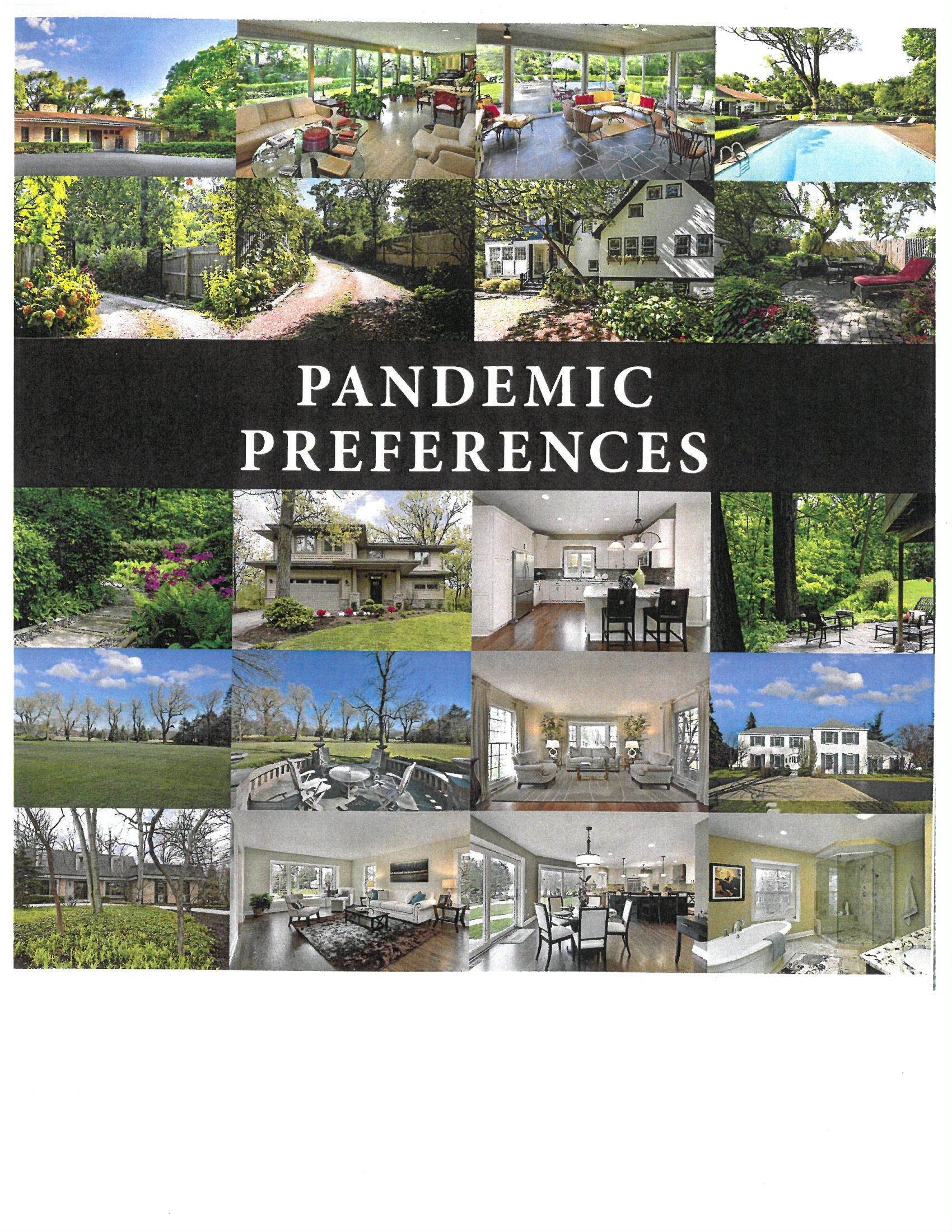
Original Post: August 7, 2021
The COVID-19 pandemic interrupted the usual Spring market in Chicago and its North Shore suburban communities but not for long. By the end of May, 2020, when the Spring market typically comes to a close, the exponential rise of COVID-19 contagion was checked in the City and North Shore. State and local officials began a phased opening of the economy and a relaxation of restrictions on social interactions and gatherings. Social distancing, masks and hand sanitizing had proven to be effective measures in mitigating the spread of the deadly virus, even without the benefit, at that time, of vaccines and vaccinations. The public, in general, began to relax with the “new normal” and buyers began to act on a novel set of preferences for properties which allowed them to approximate the “old normal” as much as possible. Buyers sought properties that minimized restrictions on their behavior without putting their health and well-being at risk. They moved from large multi-unit buildings in densely populated urban neighborhoods to tree-lined city streets in houses or small multi-unit buildings with access to private outdoor spaces like yards, patios, decks and balconies. Or they made a move to suburban single-family houses, maximizing their opportunities to safely mimic the pre-COVID social environment. They sought houses with extra rooms to accommodate the virtual workers and students within the household. They considered homes with tennis courts and in-ground pools to replace their stifled plans for a vacation, fitness program and summer camp. They sought private bucolic settings for outdoor dining and the safe entertainment of family and friends outside their immediate households.
Statistics from Chicago and its suburban communities indicate the shift in preferences: From 2019 to 2020, gains in suburban detached homes (+ 6% in average median price and + 29% in number of closed units) contrast sharply with loses in urban high-rise units (- 10% in average median price and –36% in number of closed units). The pandemic clearly favored markets for suburban single-family homes and depressed markets for urban high-rise units.
Chicago’s North Shore was ready, willing and able to respond to the market pressures of the pandemic. It had a backlog of suitable inventory, accumulated over the course of a market depression that preceded the pandemic. Many properties on the North Shore had been on and off the market, for sale or for rent, and price-reduced over the years immediately preceding the pandemic. Additionally, unlike the East and West Coast markets, the Midwest market never fully recovered from the financial-banking crisis of 2008. Consequently, despite the recent price appreciation in single-detached properties due to the pressures of the pandemic, the housing stock on Chicago’s North Shore remains a great deal.


 Facebook
Facebook
 X
X
 Pinterest
Pinterest
 Copy Link
Copy Link